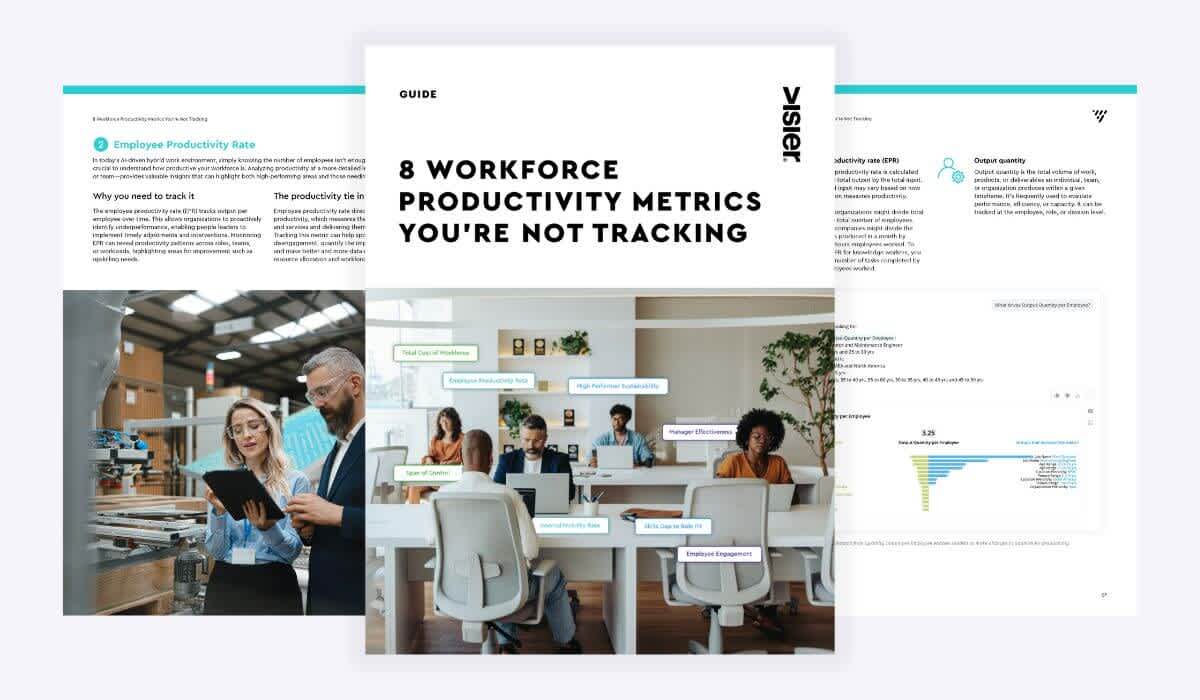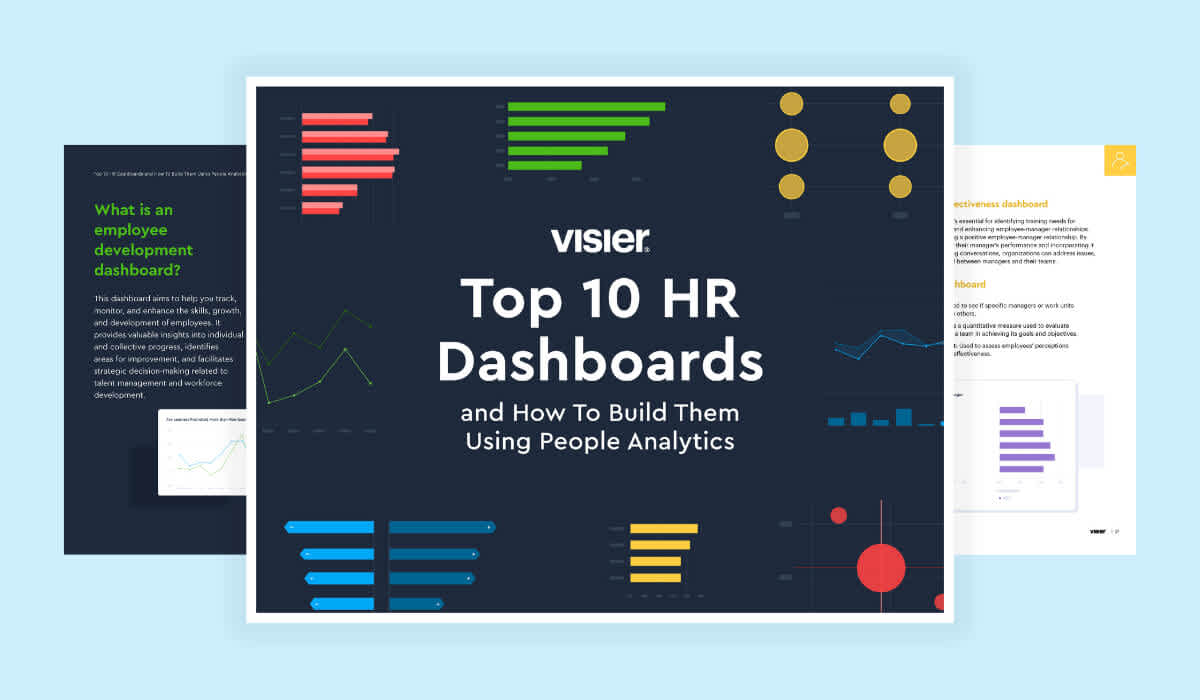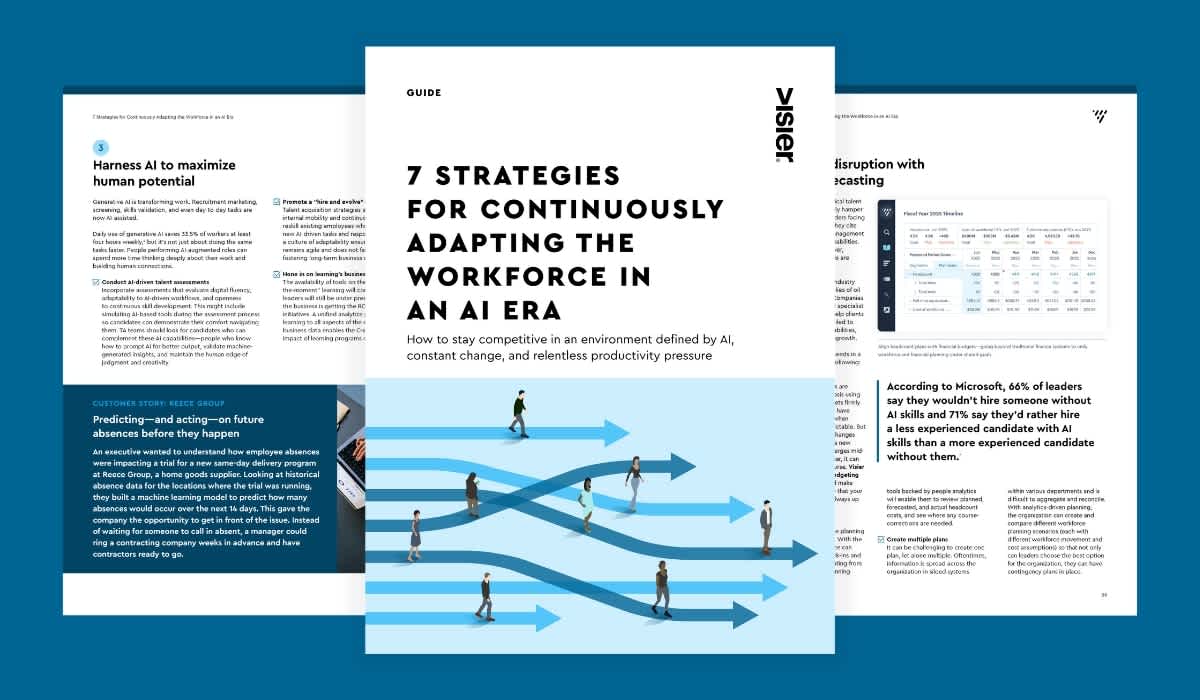10 Must-Know Succession Planning Metrics
With emerging technologies, new skills, and changing roles, succession planning is critical to keep up with the future of work. Here are the must-track metrics to know.

Today's rapidly changing business landscape, driven by the pandemic and AI, is significantly altering workplaces and job roles. Traditional succession planning, focused on infrequent reviews of top-level positions, is insufficient. Organizations are shifting towards agile workforce planning, which emphasizes continuous, data-driven development of talent pipelines across all organizational levels to prepare for leadership vacancies and avoid major costs and disruption.
Agile workforce planning practices enable organizations to minimize risk, such as talent shortages, and capitalize on upside opportunities in an era of disruption.
AI-powered analytics offer organizations the opportunity to track historical succession metrics, predict future leadership needs, identify hidden high-potential talent, and develop more resilient and flexible strategies.
What is succession planning?
Succession planning is the process of identifying critical positions and skill sets within your organization and developing internal talent to fill critical roles that exist today and that are predicted to exist in the future. This prevents skills and leadership gaps and ensures a smooth transition when one or more employees leave the company.
Succession planning is more common for leadership positions, but it isn’t exclusive to those roles. You can also use it for positions that require specialized, hard-to-find skills, where you need to always have someone capable of doing the work.
Being agile ensures continuous, data-driven planning that allows organizations to respond quickly and proactively. It’s the key to strategic workforce planning.

How do you measure the success of a succession plan?
Creating a succession plan, and identifying key positions and the right employees for the program, is the first part of the process. But how do you measure success? That comes down to a few key metrics.
The exact ones you choose will vary depending on your goals and your company. For some, engagement and retention could be priorities, while others may be more interested in performance or feedback from stakeholders.
There are, in general, two types of metrics: qualitative and quantitative.
Quantitative metrics are all about the numbers. They’re objective KPIs that can show you exactly what’s working and what isn’t.
Qualitative metrics are more subjective and include different types of feedback. They provide helpful context to understand the perspectives of all stakeholders.
Using AI tools improves succession planning
AI-powered insights can be gleaned from massive amounts of internal data on a real-time basis. Generative AI tools like Visier’s Vee provide executives, line managers, and people analytics teams with fast answers to their workforce planning questions based on their organization’s data, as well as external benchmarking data that can improve their decision-making accuracy.
Predictive analytics can be used to anticipate succession risks. AI tools can be used to reduce bias and improve internal mobility. Having access to accurate data and the answers to key questions available at your fingertips helps you gain deeper, more data-driven insights when you need them most so you can influence a critical aspect of your planning efforts.
There are a number of key succession planning metrics to track to help inform effective workforce planning and budgeting, and ensure flexibility and fluid succession planning. We’ll take a closer look at those here.
10 succession planning metrics to track
Tracking the success of your succession planning programs is all about metrics. Here are the most common ones you should keep an eye on.
1. Critical positions filled internally
One of the primary goals of succession planning is to fill roles by hiring internally. You can look at the exact number or calculate the percentage of critical or management positions filled internally. There’s no exact result to strive for.
If you were at zero prior to creating a succession planning program, even a 5% increase can be a victory. But if your goal was to fill 25% of management positions internally and you only filled 15%, you can dive into analytics to find adjustments you can make.
2. Bench strength ratio
Bench strength ratio is a measure of the strength of your talent pipeline that considers the number of qualified successors for key roles. The term “bench strength” comes from basketball, where it is used to express how strong the reserve players are. In business, it refers to the company’s ability to fill critical positions internally. To find out the exact number, you’ll need to divide the number of people ready to promote by the total headcount.
Healthy bench strength will vary by role. In most cases, you will likely aim for at least three qualified successors for each critical position. That gives you a safety margin in case one successor leaves or becomes unavailable because of other constraints. It’s a metric that highlights both depth and vulnerability in your talent pipeline.

Movement summary chart showing headcount and employee movement.
3. Time-to-fill for critical positions
It’s a competitive talent environment these days, despite economic challenges that many companies are feeling. How can both be true? With the rapid advancements in technology and changes in talent needs, critical skills are often in short supply even though application numbers might be high. Time-to-fill is an important metric that provides you with information about how challenging it might be to fill specific critical positions. It’s a measure of succession efficiency and planning readiness.
4. Internal vs. external leadership fills
Monitoring how many leadership openings are filled with internal versus external talent is a measure of the effectiveness of your internal development strategy. Employees today increasingly value professional development opportunities and are often willing to look for new opportunities when those opportunities don’t exist based on their observance of how leadership positions are filled.
5. Diversity in succession pipelines
Monitoring the level and type of diversity in your succession pipelines can provide leading indicators of where you are making, or failing to make, DEI progress. This can provide an early warning sign that can inform your internal development practices and point to where you need a more diverse focus on talent development.
6. Successor readiness levels
How well prepared are your identified successors to step into identified roles? Monitoring this can help you identify where you may be at risk of filling a key role efficiently, and where you should be directing your leadership development efforts. This metric is often looked at in terms of the number of successors ready now (ready now), the number who will be ready within one to two years (ready soon), and the number who need three or more years of preparation (future ready).

7. Turnover Risk of Successors
Once you’ve identified successors, you’ll want to ensure that they aren’t at risk of leaving your company. Using AI-powered predictive analytics, you can estimate the likelihood that these successors will leave before they’re ready to step into a target role.
8. Productivity and performance
Workforce productivity is a measure of how effectively the workforce’s efforts are being used to create products and services and drive revenue. Manager effectiveness significantly impacts team productivity. Effective succession planning ensures productivity continuity by preparing leaders who can rapidly achieve full effectiveness.
AI is also playing an increasingly crucial role in business productivity. For instance, AI can help correlate leadership behaviors with team performance outcomes, identifying which leadership qualities drive productivity in specific ways. As AI continues to evolve, employees and managers alike will need to develop new skills to keep up.
9. Promotions from non-senior roles
A healthy promotion pipeline from deeper levels of your organization indicates effective talent development. This metric tracks the percentage of leadership positions filled by employees who had previously held non-management or lower-level management positions and can provide a good comparison against lateral leadership roles.
Like the first metric on our list—the critical positions filled internally—you can use the exact number or calculate a percentage. There’s no one fixed number to aim for, as it will depend on your workforce and your goals, though you should aim for something more than zero.
10. Career path ratio
The career path ratio metric measures the ratio of possible career moves to the number of employees, providing an indication of career development opportunity availability. Higher ratios mean more internal mobility options—and also often point to lower turnover among high-potential employees.

Using workforce analytics and succession planning metrics to elevate leadership
Having plans in place to develop talent for key positions in your organization is essential, and in today's evolving business landscape, continuous planning is critical. The pace of technological changes, new legislation and regulations, and the shifting competitive landscape mean that companies simply don’t have time to rely on traditional annual workforce planning cycles.
Companies need to minimize risks and capitalize on opportunities through workforce planning efforts. Succession planning can help you avoid the risks associated with not having the right people and skills in the right place at the right time.
AI-powered metrics enable a shift from reactive succession planning to a proactive, data-driven approach to talent readiness. Strategically using metrics provides a compass for long-term leadership success. Critical, real-time, and forward-looking insights, powered by AI, allow organizations to be proactive in making agile, strategic workplace planning decisions in the face of rapid and ongoing change.
FAQs about succession planning
What are the most important succession planning metrics?
Metrics like successor coverage, bench strength, and time-to-fill help organizations assess leadership readiness and identify gaps in talent pipelines.
How does AI improve succession planning metrics?
AI helps forecast succession needs, identify high-potential talent, and analyze trends in readiness and risk, driving better, faster decisions.
How can I measure diversity in succession planning?
Track representation across gender, race, and other demographics within your successor pool to ensure equitable leadership development.



